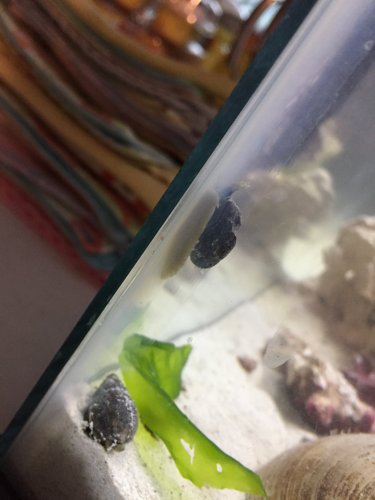Hi everyone,
My dad decided to 'help out' my tank and brought home a bunch of inverts in a cooler from Atlantic Highlands 07716. I put everything in a 10 gal to cycle it for now while I get my 29 gal set up. He brought home probably half a dozen 'grass shrimp', a clam (3 inches), about a dozen or so snails all less than 1 inch most are around 3/4, no idea what kind, most of them have disappeared in the sand, two like to climb on the glass, some seem to look like sifting snails?, a little hermit crab maybe .5" , and two small crabs (body is .5" and the legs bring it to 1 inch). There's also 3 killie bait fish in there that are going back this weekend, one seems to be turning a sort of neon yellow on its belly. I'm thinking it might be because of the ammonia so tomorrow I'll replace some of the water and see if it helps. There's supposedly also a baby conch in the mix. There's two little balls, they seem to have eggs on them/are eggs, they're soft to the touch.
Does anybody have any idea what these might be? Will I need to get rid of some or all of them when I start building my reef tank. Also how worried should I be about any sort of illnesses, I have 20lbs of caribsea sand, and 9 pounds of rock, dry and live in there that I was cycling when all of the other things were brought back and now I'm worried that the rock or the sand might have issues when I get corals and fish going in there. If there are going to be any issues with any of these inverts I could easily send them back this weekend.
Water temp is 80, salinity is 1.023, pH is reading 8.2, up from the high 7s the past two days (tank is only on day 3), ammonia is up from .5 on days one and two to 4ppm today. Nitrite is finally starting to get a reading of .5ppm, and still no nitrate reading.
Thanks
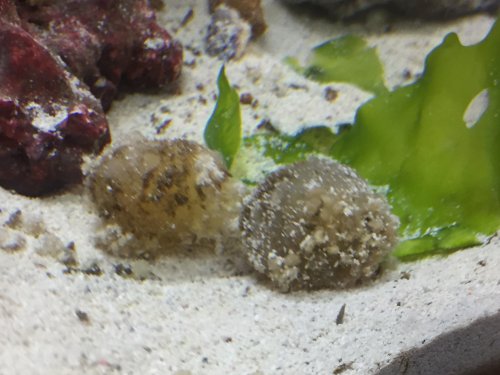
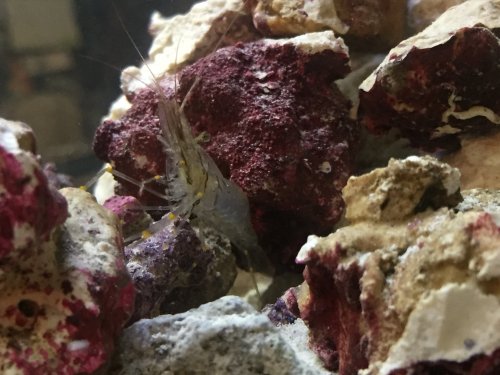
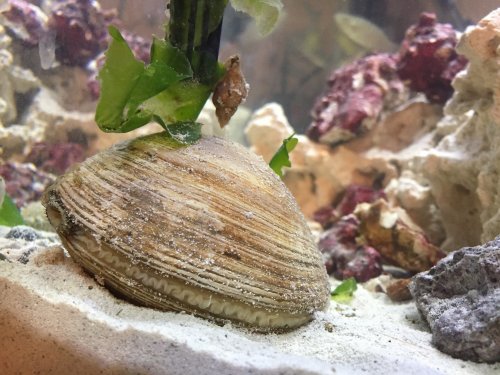
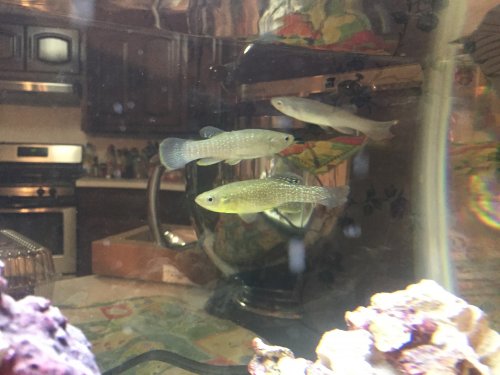
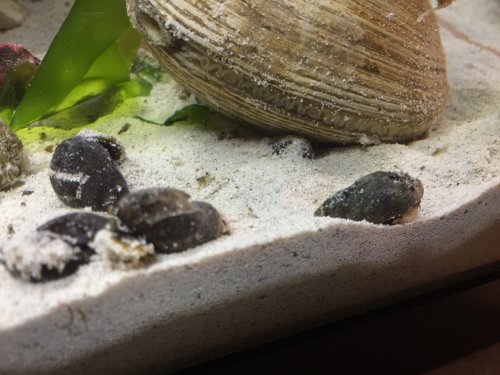
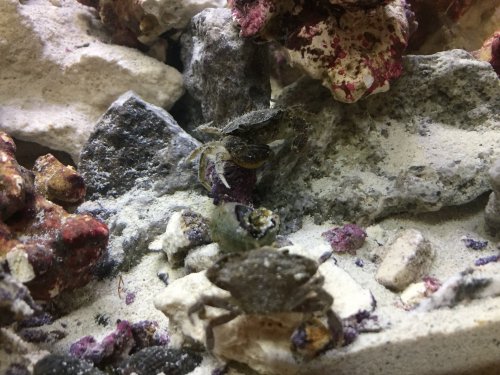
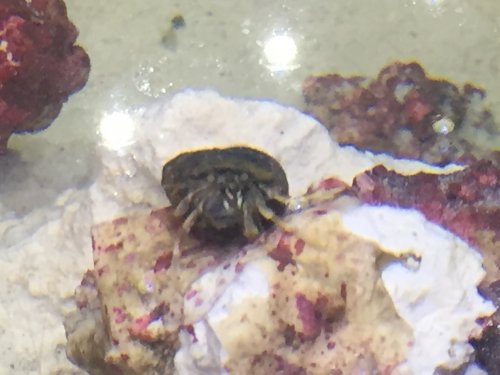
My dad decided to 'help out' my tank and brought home a bunch of inverts in a cooler from Atlantic Highlands 07716. I put everything in a 10 gal to cycle it for now while I get my 29 gal set up. He brought home probably half a dozen 'grass shrimp', a clam (3 inches), about a dozen or so snails all less than 1 inch most are around 3/4, no idea what kind, most of them have disappeared in the sand, two like to climb on the glass, some seem to look like sifting snails?, a little hermit crab maybe .5" , and two small crabs (body is .5" and the legs bring it to 1 inch). There's also 3 killie bait fish in there that are going back this weekend, one seems to be turning a sort of neon yellow on its belly. I'm thinking it might be because of the ammonia so tomorrow I'll replace some of the water and see if it helps. There's supposedly also a baby conch in the mix. There's two little balls, they seem to have eggs on them/are eggs, they're soft to the touch.
Does anybody have any idea what these might be? Will I need to get rid of some or all of them when I start building my reef tank. Also how worried should I be about any sort of illnesses, I have 20lbs of caribsea sand, and 9 pounds of rock, dry and live in there that I was cycling when all of the other things were brought back and now I'm worried that the rock or the sand might have issues when I get corals and fish going in there. If there are going to be any issues with any of these inverts I could easily send them back this weekend.
Water temp is 80, salinity is 1.023, pH is reading 8.2, up from the high 7s the past two days (tank is only on day 3), ammonia is up from .5 on days one and two to 4ppm today. Nitrite is finally starting to get a reading of .5ppm, and still no nitrate reading.
Thanks









